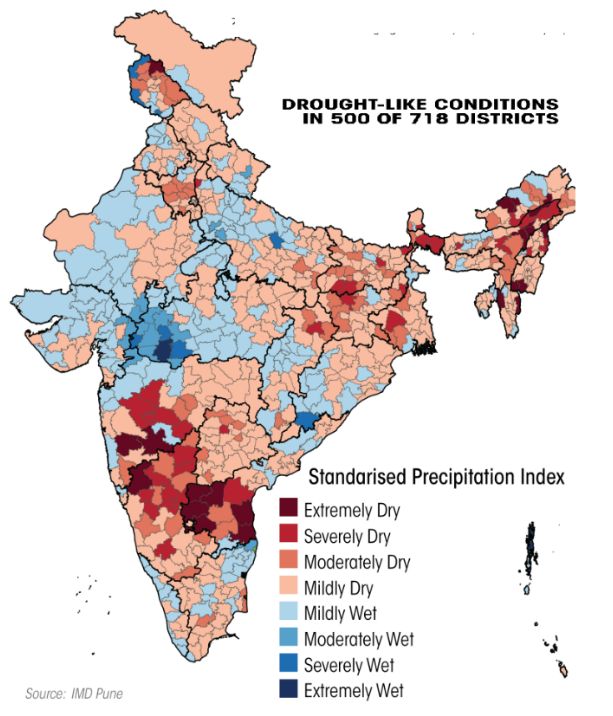Over 70% of India Reports Drought-like Conditions
Context: Over 500 of India’s 718 districts are currently reporting meteorological drought conditions, indicating a Standardised Precipitation Index (SPI).
Analysis of Data:

- SPI is a probabilistic tool deployed by IMD for monitoring drought. Negative values mean drought-like conditions, while positive values mean wetter conditions.
- Over 70% of the District reported Negative SIP values indicating (drought-like, ranging from mildly dry to extremely dry) data from August 20, 2023 to September 24, 2023, maintained by the India Meteorological Department (IMD).
- Most of India — 53 percent of the districts — was found to be in the ‘mildly dry’ category.
- Almost the whole of Northeast India, pockets of eastern India, Jammu and Kashmir and large parts of the Southern Peninsula, stretching from Maharashtra, Karnataka to Andhra Pradesh in the eastern coast were in the ‘moderately dry’ or ‘extremely dry’ categories.
Reasons for Drought
- Skewed temporal-spatial rainfall distribution, prolonged monsoonal breaks driving factors, say experts.
- Climatologically, a monsoonal break is declared when the normalized rainfall anomaly index or deviation from the long-term rainfall average over the core monsoon zone.
Impact: Nearly two-thirds of the country is vulnerable to drought. There is an upward trajectory in the duration of droughts and the severity of impacts, not only affecting human societies but also the ecological systems.
- Agriculture:
- Production of all the agricultural commodities is expected to be lower than last year. Despite an increase in the sowing area.
- Indian Economy:
- Droughts reduced India’s GDP by up to 5% in 20 years (UNCCD)
- Other Impacts include Water Scarcity and Shortage, Land Degradation and Desertification. Etc
News Source: Down To Earth
![]() 27 Sep 2023
27 Sep 2023

